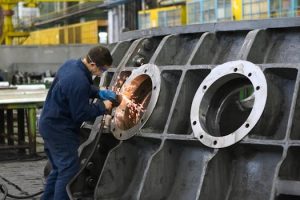Construction 2.0: Robotics and Green Building Techniques
Construction 2.0 is revolutionizing the way we think about building and construction. With the advancement of technology, the construction industry has taken a major leap forward towards innovation, efficiency, and sustainable practices. In recent years, the incorporation of robotics and green building techniques has gained momentum, leading to the birth of Construction 2.0. This new era is all about integrating state-of-the-art technology and environmentally friendly practices to create smart and sustainable buildings. In this article, we will delve deeper into the world of Construction 2.0 and explore the benefits and challenges of using robotics and green building techniques in the construction industry.
Introducing Construction 2.0
Construction 2.0, also known as Smart Construction, is the next level of digital transformation in the construction industry. It involves using advanced technologies such as robotics, internet of things (IoT), artificial intelligence, and big data to improve the entire construction process. From design and planning to execution and maintenance, Construction 2.0 aims to streamline and optimize construction operations.
The Role of Robotics in Construction 2.0
Robotics has played a crucial role in the development of Construction 2.0. Drones, automated machinery, and 3D printers have become common sights on construction sites. These robots are equipped with advanced sensors and software, allowing them to perform tasks with precision, speed, and accuracy. They can handle repetitive and dangerous tasks that were previously done by human workers, reducing the risk of on-site accidents.
The use of drones has also become an essential part of Construction 2.0. They provide an aerial view of the construction site, enabling project managers to monitor progress, identify potential hazards, and make informed decisions. With the help of drones, construction projects are completed faster and more efficiently, saving time and resources.
Green Building Techniques in Construction 2.0
Sustainable construction has become a top priority in Construction 2.0. Green building techniques focus on reducing the environmental impact of construction activities while creating energy-efficient and environmentally friendly buildings. This includes using recycled or renewable materials, optimizing energy usage, and implementing sustainable design principles.
One of the commonly used green building techniques in Construction 2.0 is Building Information Modeling (BIM). BIM is a digital representation of a building that contains all the information about its design, construction, and operation. It is a powerful tool that enables architects, engineers, and contractors to collaborate and make data-driven decisions, resulting in more sustainable and cost-effective buildings.
Benefits and Challenges of Construction 2.0
The integration of robotics and green building techniques in the construction industry has numerous benefits.
Increased Productivity and Efficiency
With robotics taking on mundane and repetitive construction tasks, workers can focus on more complex and skilled activities. This leads to increased productivity and faster project completion. Green building techniques also contribute to efficiency by optimizing building performance and reducing maintenance costs.
Cost Savings
As Construction 2.0 streamlines processes and minimizes errors, it can significantly reduce construction costs. The use of green building techniques can also result in long-term cost savings through reduced energy bills and maintenance costs.
Improved Safety
One of the main advantages of using robotics in construction is improved safety. With robots taking on dangerous tasks, the risk of accidents is reduced, creating a safer working environment for human workers.
However, there are also challenges that come with implementing Construction 2.0. One of the major concerns is the initial investment required to adopt these advanced technologies and practices. Many construction companies may find it financially difficult to make the switch. There may also be challenges related to training workers to use these technologies, as well as concerns about job displacement.
The Future of Construction 2.0
The construction industry has come a long way in embracing technology and sustainable practices, and the trend will continue in the future. With the increasing demand for smart and sustainable buildings, Construction 2.0 will become the norm. As technology continues to advance and become more affordable, robotics and green building techniques will become more accessible to all construction companies.
Innovation and Sustainability Go Hand in Hand
Construction 2.0 is not just about building smarter and faster; it is also about building with sustainability in mind. By integrating cutting-edge technology and environmentally friendly practices, the construction industry can significantly reduce its environmental impact and contribute to a more sustainable future.
In conclusion, Construction 2.0 is a game-changer in the construction industry. By incorporating robotics and green building techniques, we can increase productivity, efficiency, and safety, while reducing costs and our impact on the environment. As technology continues to evolve, we can expect to see more exciting developments in Construction 2.0, paving the way for a more advanced and sustainable construction industry.






